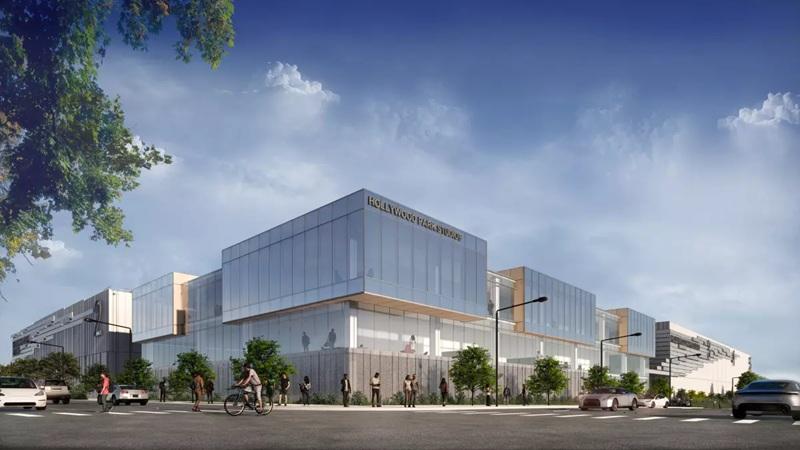Featured image credit: Gensler
Stan Kroenke is a busy man. The owner of the Los Angeles Rams football team has been aggressively developing his sprawling Hollywood Park multi-use complex in Inglewood. Now, we’re just a mere month away from breaking ground on the construction of his next phase of the project: a comprehensive production campus for film and TV. It may seem like a gamble in a time when we’re seeing the region’s once-burgeoning entertainment industry in an unprecedented tailspin. But Kroenke’s no stranger to turning big risks into bigger rewards.
Stan Kroenke’s Big Bet

Saying it’s a tough time for LA’s entertainment industry is a severe understatement. According to FilmLA, regional on-location filming has nosedived 22.4% year over year, going by 2025’s initial quarter. Perhaps even more relevant to Kroenke’s investments, Greater Los Angeles’s soundstage occupancy plummeted to 63%. If that doesn’t sound so bad, note that it was at 90% prior to the strikes that seemed to freeze so many productions in their tracks.
While there’s no guarantee that the city’s entertainment industry will ever return to its glory days, some investors are taking this lull as an opportunity. But no one seems to be betting quite as big as Kroenke. With his Hollywood Park expansion, Kroenke hopes to secure a built-in audience for the 2028 Olympics by making his facility the official International Broadcast Center for the games. To bring this immense vision to fruition, he’s recruited Gensler for design, Pacific Edge for property management, and Clayco as the general contractor. Financing was managed by Guggenheim Investments.
The Hollywood Park Expansion
The initial stage of the development will include:
- Soundstages (five at 18,000 square feet each)
- Office space (80,000 square feet, three-story structure for production and post-production)
- Construction mill (for building sets, props, and other structures necessary for productions)
- Infrastructure (for supporting portable equipment and trailers)
- Parking (accommodating up to 1,100 vehicles)

A Maximal Mixed-Use Facility
But the film and television production campus is just a facet of Kroenke’s overall Hollywood Park complex. Ultimately, Kroenke aims to establish a multi-use center bringing together entertainment, media, and technology with SoFi Stadium at its core. The 300-acre Hollywood Park already hosts the YouTube Theater, the headquarters of the National Football League’s (NFL) West Coast division, and the aforementioned SoFi Stadium (home of the Kroenke-owned Los Angeles Rams football team).
But the park also incorporates residential buildings, retail, hospitality, and public areas, making it the picture-perfect representation of a modern mixed-use asset class. Approximately 290,000 square feet of office space surrounding SoFi Stadium has already been leased by a slew of NFL-related organizations, including NFL.com, the NFL Network, the NFL app, and NFL Redzone.
Kroenke’s Future Expansions and Projects
Construction is already expected to begin on the Hollywood Park expansion this June with an urgency that aims to have the facility up and running in time for the 2028 Olympic Games. At the completion of the Olympics, the complex will immediately pivot to commercial television and film production. Kroenke is already considering additional expansions that could accommodate an additional 20 soundstages and 200,000 square feet of office space. As if he didn’t already have his hands full, the real estate maven is also planning a $10 billion mixed-use facility in Canoga Park’s Warner Center surrounding the Rams’ practice area and headquarters.

Comments
Post a Comment